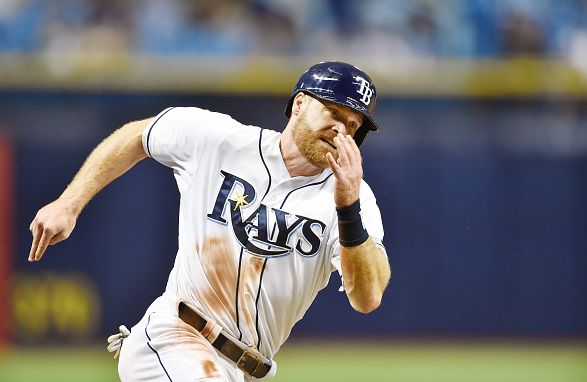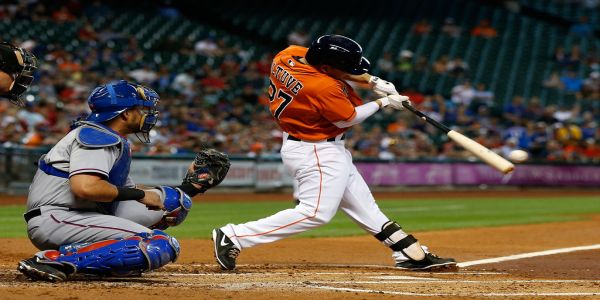2016 Fantasy Baseball: Plate Discipline — Second Basemen

For those that watch baseball religiously, a lot has been made of the so-called five tools that scouts look to when evaluating players. While fielding and throwing are important, they typically don’t matter to fantasy players. Most fantasy players focus on the other three tools: hitting, hitting for power, and speed. That translates into hitting for average, hitting for power, and stealing bases.
More and more leagues are including an on base element. That could be walks or on base percentage. Even leagues that continue to use the standard five categories can take advantage of what some lovingly call the sixth tool (or fourth fantasy tool): plate discipline. As scouts and baseball executives are becoming increasingly aware, players are born with plate discipline or are not.
Essentially, the difference between the hit tool and the plate discipline tool is that with the plate discipline tool you are able to recognize which pitches you should swing at. When looking at the data, the key statistic (as found at Fangraphs) is Oswing. That is the percentage of pitches outside the strike zone that a hitter swings at. Talented hitters can make contact on those pitches, but usually it is the kind of contact pitchers want.
Plate discipline is only one of the four tools that fantasy players look for, so you shouldn’t govern your entire draft based on plate discipline, but it does allow us to find the occasional sleeper and avoid the occasional rotter. In this series, we will identify a couple of sleepers and a couple of players who could end up being busts. Looking at all of the data helps us see why guys strikeout a lot or walk a lot. When we do that, it helps explain why some us end up liking certain guys and not liking others. Often we get criticized for that and we don’t have the words to articulate our feelings. Some of these numbers give us that articulation.
Sleepers
| SO% | BB% | Oswing | Zcontact | Contact | BABIP | |
| 2013 | 22.2 | 7.8 | 23.9 | 87.6 | 80.5 | .255 |
| 2014 | 21.1 | 7.4 | 21.9 | 89.4 | 84.4 | .268 |
| 2015 | 18.0 | 8.9 | 24.7 | 89.1 | 83.4 | .323 |
Bill James once compared statistics to language. The assumption here is that they would correspond to adjectives since we use adjectives to describe things. I would compare statistics to art. Most of us never evolved much past the stick figure phase, but a few people mastered art and can create vivid images that seem almost real. If given enough numbers on a player, we can almost picture them in our heads without ever seeing them actually play. However, if you remove some of those numbers (or subtle strokes) then the picture looks more abstract and therefore becomes more open to interpretation.
When you peer through the lense of only his basic numbers, it is easy to see why fantasy players are pushing Forsythe down the draft board. He came out of nowhere and people are afraid he will go right back to nowhere. The numbers above demonstrate steady improvement and show that his 2013 and 2014 campaigns were artificially lackluster because of his horrible BABIP rates. Based on his performance last season, he really shouldn’t be a sleeper, but somehow he still is.
| SO% | BB% | Oswing | Zcontact | Contact | BABIP | |
| 2013 | 13.0 | 10.3 | 23.9 | 90.5 | 86.5 | .303 |
| 2014 | 12.8 | 11.5 | 23.9 | 91.7 | 86.8 | .301 |
| 2015 | 10.5 | 11.6 | 22.9 | 92.8 | 88.6 | .288 |
Okay, you had to know this was coming. Zobrist is not as much a sleeper as someone that is chronically undervalued. The upshot here is that it gives me the opportunity to articulate why I like him so much. It begins with a contact rate and strikeout rate that have always been good and yet have improved in each of the past three seasons. We rarely ever see someone with a one to one strikeout to walk ratio and yet Zobrist beat that this past season.
If anything, Zobrist highlights the subtle difference between process and results. Results are obviously derived from process, but sometimes there are small variations where some value can sneak in. Zobrist’s BABIP indicates there is room for improvement even when the process can’t possibly get much better. In plain English, we could see an improvement in his overall numbers this season even if he really doesn’t improve as a player. Add that to the bonus of playing in perhaps the best lineup in baseball and you can see he will likely be undervalued again.
Rotters
| SO% | BB% | Oswing | Zcontact | Contact | BABIP | |
| 2013 | 12.6 | 4.8 | 37.6 | 94.8 | 87.2 | .316 |
| 2014 | 7.5 | 5.1 | 37.4 | 94.9 | 91.1 | .360 |
| 2015 | 9.7 | 4.8 | 36.7 | 94.6 | 89.8 | .329 |
Again, we see numbers paint a very clear picture and that picture looks drastically different than what we saw in the other cases. We have to keep in mind that plate discipline is only one of the categories we have to judge a player on. Altuve brings a definite speed element to the game and he added power a year ago. He also adds a durability component rarely seen from middle infielders. All of those components make him a valuable fantasy player.
All that being said, the above crystallizes why I have been bearish on Altuve over the years. He has the smallest strike zone in baseball and still doesn’t draw walks. Eventually, that kind of free swinging tends to catch up with you. They say hand eye coordination is the first thing to go. Suddenly, those occasional infield hits turn into strikeouts. If you lose even a step it gets that much worse.
| SO% | BB% | Oswing | Zcontact | Contact | BABIP | |
| 2013 | 19.8 | 9.4 | 33.8 | 92.5 | 87.7 | .292 |
| 2014 | 16.5 | 4.8 | 32.9 | 92.0 | 87.2 | .346 |
| 2015 | 13.9 | 3.8 | 38.1 | 93.7 | 88.0 | .383 |
Low walk rates by themselves are not a death knell for a player. After all, a water bug like Gordon likely won’t walk as much as a power hitter. A speed threat like Gordon can turn a walk into a double very easily. Gordon has a added feature of having an unsustainable batting average on balls in play along with an unsustainable rate of swinging at pitches outside the zone. Yet, the Marlins saw free to give him five years and 60 million dollars.
In many ways, Gordon is even worse off than Altuve because his game is built entirely around speed. So, his BABIP numbers require him to be able to beat out a number of infield hits in order to maintain his fantasy and real value. When you don’t include the free pass as a weapon, you become very marginal when you have merely good speed as opposed to world class speed.





